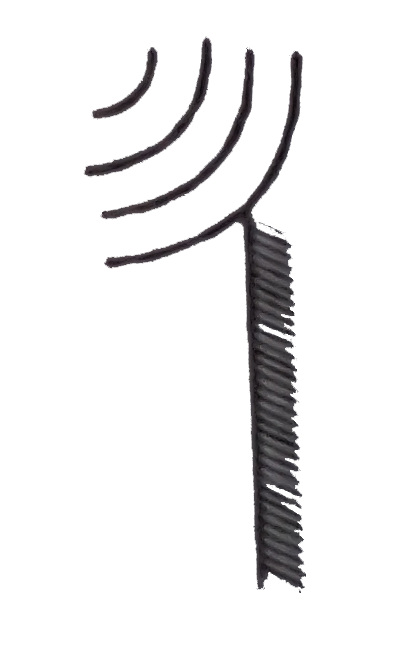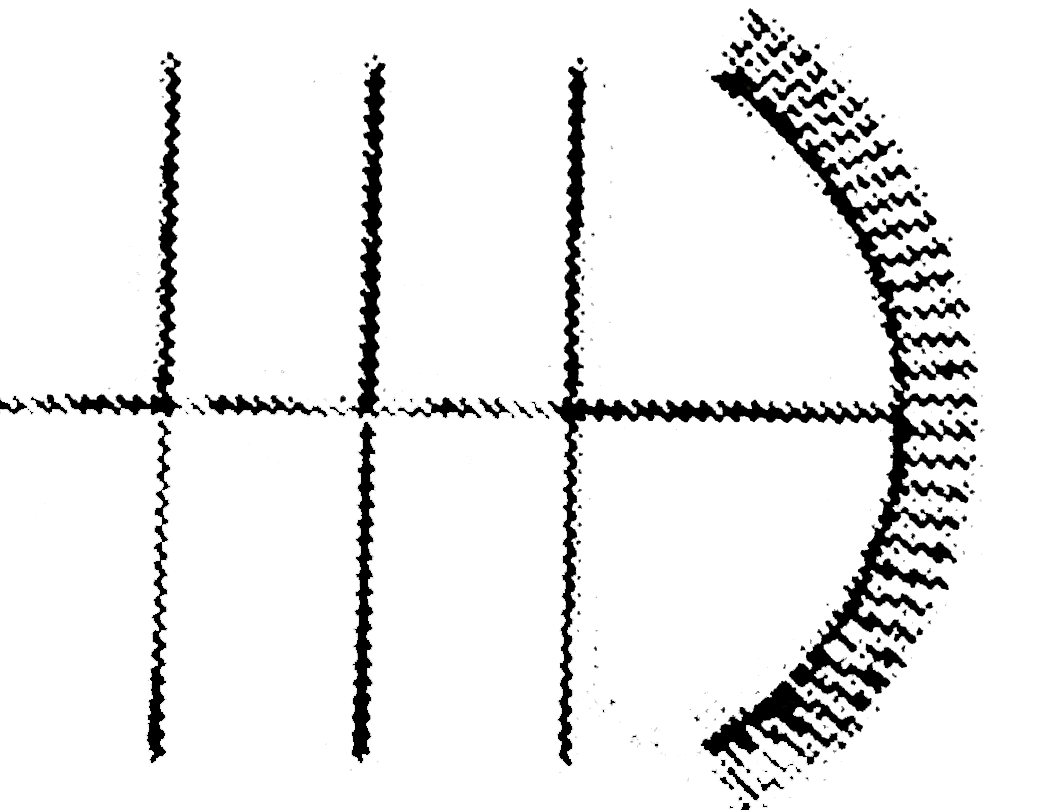Spherical wavefronts, emanating from a point source, strike a plane reflecting surface. What will happen to these wave fronts, immediately after reflection?
They will remain spherical with the same curvature, both in magnitude and sign.
They will become plane wave fronts.
They will become plane wave fronts.
They will remain spherical, but with different curvature, both in magnitude and sign.
The correct Answer is:C
To solve the problem regarding the behavior of spherical wavefronts after they strike a plane reflecting surface, we can break it down into the following steps:
Step 1: Understand the Source of the Wavefront
A point source emits spherical wavefronts. This means that the wavefronts are concentric spheres centered around the point source.
Hint: Remember that a point source creates spherical waves that propagate outward in all directions.
Step 2: Identify the Interaction with the Reflecting Surface
When these spherical wavefronts encounter a plane reflecting surface, they will interact with that surface. The nature of the reflection depends on the characteristics of the wavefronts and the surface.
Hint: Consider how light behaves when it hits a flat surface—think about the law of reflection.
Step 3: Apply the Law of Reflection
According to the law of reflection, the angle of incidence is equal to the angle of reflection. This means that each point on the wavefront that strikes the reflecting surface will reflect back into the medium.
Hint: Recall that the angle of incidence equals the angle of reflection for all points on the wavefront.
Step 4: Determine the Shape of the Reflected Wavefronts
After reflection, the spherical wavefronts will not remain the same. Instead, they will change their curvature. The reflected wavefronts will still be spherical but will have a different curvature compared to the original wavefronts.
Hint: Think about how the curvature of a wavefront changes when it reflects off a surface.
Step 5: Conclusion
The reflected wavefronts will remain spherical but will have a different curvature in terms of both magnitude and sign. Therefore, the correct conclusion is that the wavefronts will continue to be spherical but will differ from the original wavefronts.
Hint: Ensure you understand the implications of curvature changes in wavefronts after reflection.
Final Answer
The spherical wavefronts will remain spherical after reflection but will have a different curvature in both magnitude and sign.
A point source emits spherical wavefronts. This means that the wavefronts are concentric spheres centered around the point source.
When these spherical wavefronts encounter a plane reflecting surface, they will interact with that surface. The nature of the reflection depends on the characteristics of the wavefronts and the surface.
According to the law of reflection, the angle of incidence is equal to the angle of reflection. This means that each point on the wavefront that strikes the reflecting surface will reflect back into the medium.
After reflection, the spherical wavefronts will not remain the same. Instead, they will change their curvature. The reflected wavefronts will still be spherical but will have a different curvature compared to the original wavefronts.
The reflected wavefronts will remain spherical but will have a different curvature in terms of both magnitude and sign. Therefore, the correct conclusion is that the wavefronts will continue to be spherical but will differ from the original wavefronts.
The spherical wavefronts will remain spherical after reflection but will have a different curvature in both magnitude and sign.
Topper's Solved these Questions
- WAVE OPTICSBOOK - NCERT FINGERTPS ENGLISHCHAPTER - WAVE OPTICSEXERCISE - HIGHER ORDER THINKING SKILLS
8 Videos
- WAVE OPTICSBOOK - NCERT FINGERTPS ENGLISHCHAPTER - WAVE OPTICSEXERCISE - NCERT EXEMPLAR PROBLEMS
5 Videos
- SEMICONDUCTOR ELECTRONICS : MATERIALS , DEVICES AND SIMPLE CIRCUITS BOOK - NCERT FINGERTPS ENGLISHCHAPTER - SEMICONDUCTOR ELECTRONICS : MATERIALS , DEVICES AND SIMPLE CIRCUITS EXERCISE - Assertion And Reason
15 Videos
Similar Questions
Spherical wave fronts shown in figure,strike a plane mirror .reflected

View Solutionwhat type of wavefront will emerge from (i) a point source and (ii) distant light source ?
View SolutionWhat is the shape of the wavefront diverging from a point source of light?
View SolutionSpherical wave are emitted from 2 watt point source in an isotropic non-absorbing medium. Calculate the wave intensity 1m from the source?
View SolutionLigtht falls on a plane reflecting surface.For what angler of incidence is the reflected ray normal to the incident ray.
View SolutionSpherical waves are emitted from a 1.0W source in an isotropic non-absorbing medium. What is the wave intesity 1.0m from the source?
View SolutionPlane wavefronts are incident on a spherical mirror as shown, the reflected wavefronts will be

View SolutionThe change in phase if a wave is reflected from a rigid surface is
View Solution_E01_077_Q01.png)
Huygen was the figure scientist who proposed the idea of wave theory of light he said that the light propagates in form of wavelengths. A wavefront is a imaginary surface of every point of which waves are in the same. phase.
For example the wavefront for a point source of light is collection of concentric spheres which have centre at the origin w1 is a wavefront w2 is another wavefront.
The radius of the wavefront at time 't' is 'ct' in thic case where 'c' is the speed of light the direction of propagation of light is perpendicular to the surface of the wavelength. the wavefronts are plane wavefronts in case of a parallel beam of light.
_E01_077_Q02.png)
Huygen also said that every point of the wavefront acts as the source of secondary wavelets. The tangent drawn to all secondary wavelets at a time is the new wavefront at that time. The wavelets are to be considered only in the forward direction (i.e., the direction of propagation of light) and not in the reverse direction if a wavefront w1 and draw spheres of radius 'cΔt' they are called secondary wavelets.
Draw a surface w2 which is tangential to all these secondary wavelets w2 is the wavefront at time t+Δt Huygen proved the laws of reflection and laws of refraction using concept of wavefront.
Q._E01_077_Q03.png)
Plane are incident on a spherical mirror as shown in the figure. the reflected wavefronts will be
View Solution_E01_077_Q01.png)
Huygen was the figure scientist who proposed the idea of wave theory of light he said that the light propagates in form of wavelengths. A wavefront is a imaginary surface of every point of which waves are in the same. phase.
For example the wavefront for a point source of light is collection of concentric spheres which have centre at the origin w1 is a wavefront w2 is another wavefront.
The radius of the wavefront at time 't' is 'ct' in thic case where 'c' is the speed of light the direction of propagation of light is perpendicular to the surface of the wavelength. the wavefronts are plane wavefronts in case of a parallel beam of light.
_E01_077_Q02.png)
Huygen also said that every point of the wavefront acts as the source of secondary wavelets. The tangent drawn to all secondary wavelets at a time is the new wavefront at that time. The wavelets are to be considered only in the forward direction (i.e., the direction of propagation of light) and not in the reverse direction if a wavefront w1 and draw spheres of radius 'cΔt' they are called secondary wavelets.
Draw a surface w2 which is tangential to all these secondary wavelets w2 is the wavefront at time t+Δt Huygen proved the laws of reflection and laws of refraction using concept of wavefront.
Q._E01_077_Q03.png)
Plane are incident on a spherical mirror as shown in the figure. the reflected wavefronts will be
View Solution
